In 1731 King Charles of Bourbon inherited the famous “Farnese collection” from his mother, Elisabetta Farnese. When the enlightened sovereign ascended the throne of Naples in 1734, he took these splendid works of art with him in dowry to the Parthenopean city. Charles furthermore ordered the excavations of Herculaneum (1738) and Pompeii (1748), which led to the discovery of an impressive number of Roman Art treasures.
However it was only in 1777 that Charles’s son, Ferdinand IV of Bourbon, determined by decree to gather these great dynastic collections, (Farnesian, Pompeian and Herculaneum) together in the “Palazzo dei Vecchi Studi” (the Old University) and earmark them for public use. Moreover, this new building was envisaged as an encyclopedic museum where all human knowledge should be situated: works of art, books, papyri, studios and even an astronomical observatory. Following the dominant Enlightenment culture, the educational aspect of this museum and its importance as a public utility were emphasized. Consequently,Ferdinand intended to bring together workshops, laboratories, painting, sculpture, and restoration schools and more. It was aimed to create a museum-workshop-school in the building. However, in order to do this, the old “Palazzo degli Studi” required profound changes and, in 1806 when the French arrived, the building was still under restoration.
During the French domination, first Giuseppe Bonaparte, and then Gioacchino Murat, abandoned the museum’s encyclopedic project for nearly 10 years, “reducing” it to a simple venue for the exposition of the imposing Farnese and Bourbon collections.
During the Napoleonic period, all the leading museums in the territories conquered by the French armies were stripped of their most important masterpieces which were channelled to the Louvre Museum in Paris. But the Archaeological Museum of Naples (like the Brera Museum in Milan) did not suffer from depletion; in fact it was enriched with famous masterpieces.
Murat sought an autonomous kingdom in Napoleonic Europe. The new director of the Museum, Michele Arditi (1807-1838), immediately showed his worth: first of all he introduced more severe management of the personnel compared to the previous state of disorder; the obligation and control of daily working hours; respect for a precise work timetable and the prohibition of objects being taken out of the Museum. After the fall of Murat (1815), during the Bourbon restoration, Ferdinand I again confirmed Michele Arditi as director of this institution which was growing continually.
What clearly made the difference between French and Bourbon management of the Archaeological Museum was that, with his return, King Ferdinand I explicitly stated that the collections of the Archaeological Museum were his “allodial property” and therefore alienable. The royal sites belonged to the Crown – and were therefore not saleable, – but the collections were property of the king (and therefore privately owned). The idea advanced by the French kings, that artistic masterpieces were protected by the State, was therefore denied by this declaration of Ferdinand I.
The restored Bourbon monarchy maintained the original educational and public purpose of the Archaeological Museum of Naples, but at the same time it displayed a mentality not in line with the most modern Enlightenment principles.
Later, only in 1822, would the transfer of the archaeological artifacts from the “Herculaneum Museum” of Portici be completed, but despite all efforts, the Royal Bourbon Museum continued to seem an overcrowded repository without any precise exhibition criteria. Infact, the first extensive re-organization only took place during the Unification of Italy under the decisive intervention of Giuseppe Fiorelli.
Excerpt from: Nadia Barrella e Ludovico Solima, Musei da svelare, Luciano editore, Napoli, 2011, pp. 17-23
For further info about our guided tour of the National archaeological Museum of Naples








Leave a Reply
Want to join the discussion?Feel free to contribute!